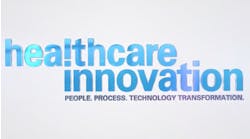On July 1, nearly 200 U.S. oncology practices began participating in a new program launched by the Center for Medicare and Medicaid Innovation to encourage higher quality and more coordinated cancer care. The Oncology Care Model (OCM) encourages practices to improve care and lower costs through episodic and performance-based payments that reward high-quality care. As with other new payment models, gathering new types of data and reporting it to CMS presents a challenge to both the oncology practices and the health IT vendors who support their work.
Practices participating in the OCM will provide treatment following nationally recognized clinical guidelines for beneficiaries undergoing chemotherapy, with an emphasis on “person-centered” care. They will provide enhanced services to beneficiaries who are in the OCM to help them receive timely, coordinated treatment. The five-year plan starts with bonuses only and then moves to an optional two-sided risk, starting in 2018. (When it involves upside and downside risk, the program qualifies as an alternative payment model, and thus the participating oncologists would be exempt from MIPS requirements. But in the early stages when there is no downside risk, it is less clear whether the practices would be exempt.)
I recently spoke about these challenges with Brenton Fargnoli, M.D., associate medical director for strategic initiatives at New York-based Flatiron Health, which has both an oncology EHR and data analytics platform. Vendors such as Flatiron, McKesson Specialty Health and others had to hurry to offer comprehensive solutions to support oncology practices participating in the Oncology Care Model.
Fargnoli, who also is an attending physician at Memorial Sloan Kettering Cancer Center in New York, explained that the financial incentives fall into two separate groups, one being a per-beneficiary Monthly Enhanced Oncology Services (MEOS) payment of $160 for the duration of the episode. The other is a potential performance-based payment that incentivizes practices to lower the total cost of care and improve care to beneficiaries. “Those two arms have separate data requirements,” he said.
Practices are required to create a patient-focused care management plan with 13 data fields that are documented and shared in a patient-friendly manner, he said. That includes elements such as prognosis and expected response to treatment, he said, adding that some of those fields don’t reside in a typical EHR. He noted that in the initial request for applications put out by CMMI, there was a draft measure that required including validated patient-reported outcome tools, but somehow that measure did not make the final list.
“We have mapped the fields that do exist in the EHR already to a patient-friendly output,” he explained, “and the fields that previously didn’t exist such as prognosis, we have added in, so we are able to capture the data on the front end, and then on the back end, have the reporting capability tied in as well.”
A second informatics challenge is around nationally recognized guideline adherence. “It is necessary to understand what the guidelines are, which treatments are being given to which patients and how those match up,” he explained. The requirement is to practice according to those guidelines, and when not, document why you’re treating the patient differently. Some practices are using tools embedded in the EHR to check on the guidelines, while others rely on their clinical acumen, he said.
The third place that informatics comes into play involves quality measurement. There are 10 quality measures that practices need to provide to CMS on a quarterly basis. Some involve clinical processes, such as conducting a depression screening, quantifying pain level within a plan of care, and medication reconciliation. Some are processes that may be new or that weren’t conducted with every patient at every encounter before.
“Here is where the data really comes into play,” Fargnoli said. “There needs to be a way on the front end that this data is documented in a way that can be measured, tracked and reported.” In other words, it must be structured data. He said Flatiron has sought to help its customers make sure that the OCM quality measures are part of the natural workflow of the care team.
“That enables us to use our data model and harmonization not only to synthesize the data for the reporting piece,” he said, “but also provide information to the practice on how they are doing at a granular level, by physician, by disease type, drilling down to the patient level.” The next step becomes marrying this up with the total cost of care and the performance in the program, Fargnoli said. “This is where the idea of the learning health system comes in. Which practices are performing well overall and which quality measures are they spiking on to validate which process measures are really tied to outcomes and which process measures are really just processes.”
He said Flatiron has been trying to give more real-time information to practices so they can understand how to improve and act upon it more rapidly than they do in response to claims-based data from CMS. “We have about 30 percent of practices participating in OCM on our Flatiron provider network,” Fargnoli said. “That gives us an opportunity to provide benchmarking, not just within practices but across practices.”
Beyond the OCM requirements, he added, practices have an appetite for looking at additional quality measures and key performance indicators.
Of course, Flatiron isn’t the only vendor that accelerated its work to meet the July 1 deadline. “The structure that the OCM requires has brought together expert teams in data analytics, IT and clinical content throughout McKesson Specialty Health and the US Oncology Network to create a system of care that meets the goals of the program,” said John Fleagle, M.D., practice president and managing partner at Rocky Mountain Cancer Centers, in a prepared statement. “From the navigator meeting the patient and their loved ones for the first time, the practice provides expert guidance and well conceived care throughout the continuum of their experience with cancer.”
Fargnoli said that oncology practices faced a few challenges as they approached the July 1 launch date. One was just general clarification of what all the rules and policies meant and how they were to be applied in the operational setting of a practice. CMS has been providing documentation and webinars to alleviate some of those concerns, he said.
“The second challenge is operationalizing those rules in a meaningful way in a clinical setting that doesn’t create additional burden on staff,” he said. That is where technology solutions come into play. Automating and making requirements as seamless as possible directly within the primary workflow tool of the practice, which is the EHR, is key. And offering the analytics tools on the back end to calculate the quality measures takes a large burden off the practice.
Practices that aren’t leveraging technology to make that easier are having to hire additional staff for manual data entry, and taking additional time to go through this with patients, he said, and when reporting comes around in October, there will be lots of manual data entry required if they are not leveraging software and analytics tools.
OCM is an ambitious model, and Fargnoli said the oncologists should be aware that there are planned changes built into it, and there will likely be unplanned changes as practices and CMS learn together. “So the ability to be nimble is going to be fundamental for these oncology practices. And that is where partnering with organizations that have the expertise to move quickly is going to be important. As OCM evolves and downside risk comes into play, there will be a whole host of additional opportunities for practices and additional tools they will require on the data analytics front in terms of understanding total cost of care, and the entire patient journey. Bringing together disparate data from across the entire health ecosystem will become pivotal.”


